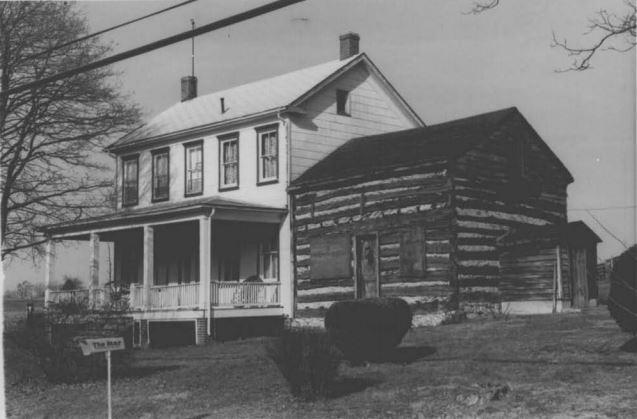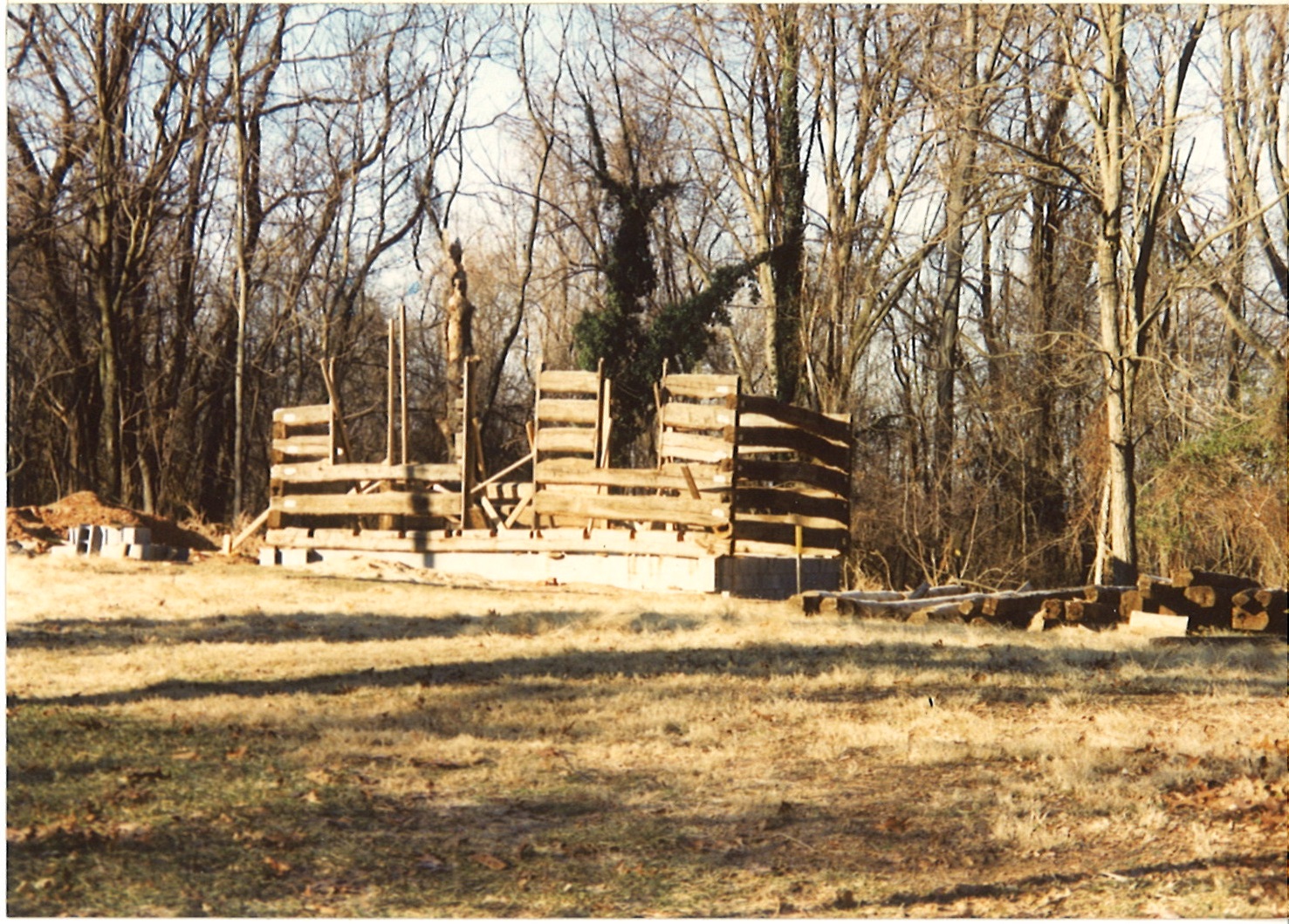Amid Seneca Creek State Park’s 6,300 acres along 14 miles of Seneca Creek’s natural beauties and facilities for boating and fishing and trails for hiking, bicycling and horseback riding is a hidden gem. The 164-year-old Grusendorf Log Cabin is the oldest surviving structure from the original Germantown, said Erik Ledbetter, the park’s lead park ranger.
Germantown has had three lives, noted Ledbetter, a Rockville resident with degrees in history from The Johns Hopkins and Yale universities and experience as a historian in the museum field and nearly seven years with the Maryland Park Service. Its first iteration was as a pre-Civil War farming community at the crossroads of Clopper and Germantown roads where its many German-born and German-speaking residents determined its name. “Traces of the German families – like the Richters – still exist in the area’s road names,” Ledbetter said.
Post-Civil War, in the 1870s, with the coming of the Metropolitan Branch of the B&O Railroad, the center of Germantown moved “lock, stock and barrel,” a mile away to Liberty Mill Road, Ledbetter said, to be next to the railroad, he noted. And in the 20th century when the area exploded as a bedroom community, Middlebrook Road took prominence.

The Grusendorf cabin, Ledbetter said, was built by Jacob Snyder, a carpenter and landowner who bought the land in 1855 and built the cabin on it sometime prior to 1860. Snyder, in turn, sold the cabin and the land to Frantz and Hanna Grusendorf in 1860. Frantz was a stonemason, who is said to have built foundations and walls for other houses, but died early; Hanna was a midwife who lived there until her death in 1902.
Ledbetter observed that living in one-room was not as restrictive as it might appear through a contemporary lens. The room has an upper loft beneath the roof, and also, a lot of the things that are inside homes now were located outside back then – like a larder and root cellar for food storage.
The Grusendorfs’ daughter, Mary Augusta, married Frederick Marth, and they built the two-story Victorian house attached to the log cabin, noted Susan Soderberg, president of the Germantown Historical Society. The cabin became a wing, used as a larder or storehouse, said Ledbetter. When Mary died in 1931, ownership transferred to collateral relatives, the Dunn family.
The Grusendorf Log House, said Soderberg, was placed on the Master Plan for Historic Preservation on Feb. 3, 1981. Jean C. Dunn, who owned the property at the time, “had a contract with a purchaser for the property, Berger/Berman Builders, who wanted to demolish both buildings in order to construct a housing development.” The demolition permit was denied, but a rehabilitation permit was granted, and “the house remained unoccupied until it was burned by arson on Feb. 24, 1987,” she said, adding that the flames destroyed the Victorian house, but only damaged the roof of the log cabin.

Soderberg cited a Feb. 25, 1987 Germantown Gazette report that “The owner of the property at the time, Richard Mandell of Sandy Spring Builders, indicated that he had plans to move the log structure.” Ledbetter said the cabin was given to the state of Maryland on the condition that it be moved and given a home. As part of its “commitment to preserve Montgomery County heritage,” Ledbetter said, “the Maryland Park Service trucked it two miles down the road to Seneca Creek State Park and reassembled it.”
There is conflicting information about the date the cabin was moved, Ledbetter acknowledged. “However, a handwritten note included with the Maryland Historical Trust report states the move was prior to 1991, so I favor 1990 as the most probable year,” he said. “It may not have been re-erected at the park until 1994. Unfortunately, our records of the move are scanty to nonexistent.”
[foogallery id=”41952″]
The cabin has always been open for special events, including open houses, Ledbetter said. For the past few years, Bonnie Bell has been hosting a monthly open house at the cabin. The Gaithersburg resident, who took part in the historical society in her native Massachusetts and did volunteer work locally on the Seneca Creek Greenway Trail, attended an open house at the cabin about three years ago. Fascinated, she trained as a volunteer ranger – which Ledbetter said enables her “to do many of the same things as rangers” — and took on the Grusendorf open houses, usually scheduled for the last Saturday of each month.
Bell’s narratives center on the history of the cabin, including some entertaining local Civil War stories; and objects like pottery and some unusual farm implements found in the cabin or the park, and 19th century homemaking skills like candle making, butter churning cider pressing. Her subject matter, she said, depends on the interests and questions of the people who stop by – whether for 15 or 20 minutes or the whole two hours.
At the open house on Saturday morning, visitors be able to practice the craft of making corn husk dolls. “It’s for adults and children,” Bell emphasized. “It’s fun for everybody!”
An Open House at the Grusendorf Log Cabin will be held on Saturday, Aug. 31, 10 a.m. to noon, in Seneca Creek State Park, 11950 Clopper Road, Gaithersburg. Admission is free. For information, visit http://dnr.maryland.gov/publiclands/Pages/central/seneca.aspx or call 301-924-2127.